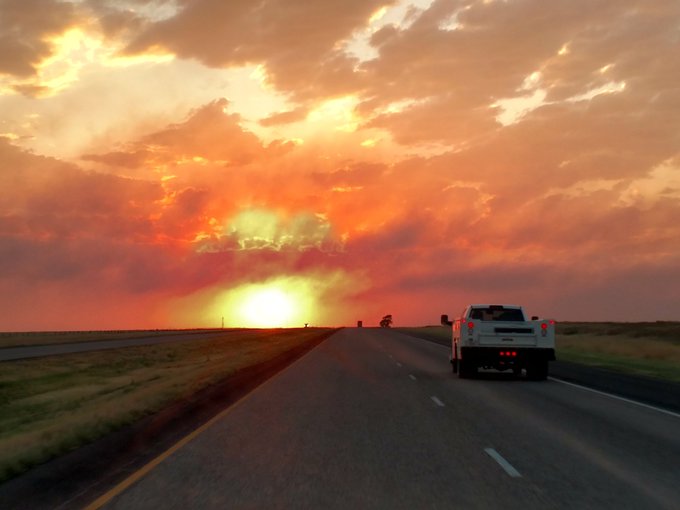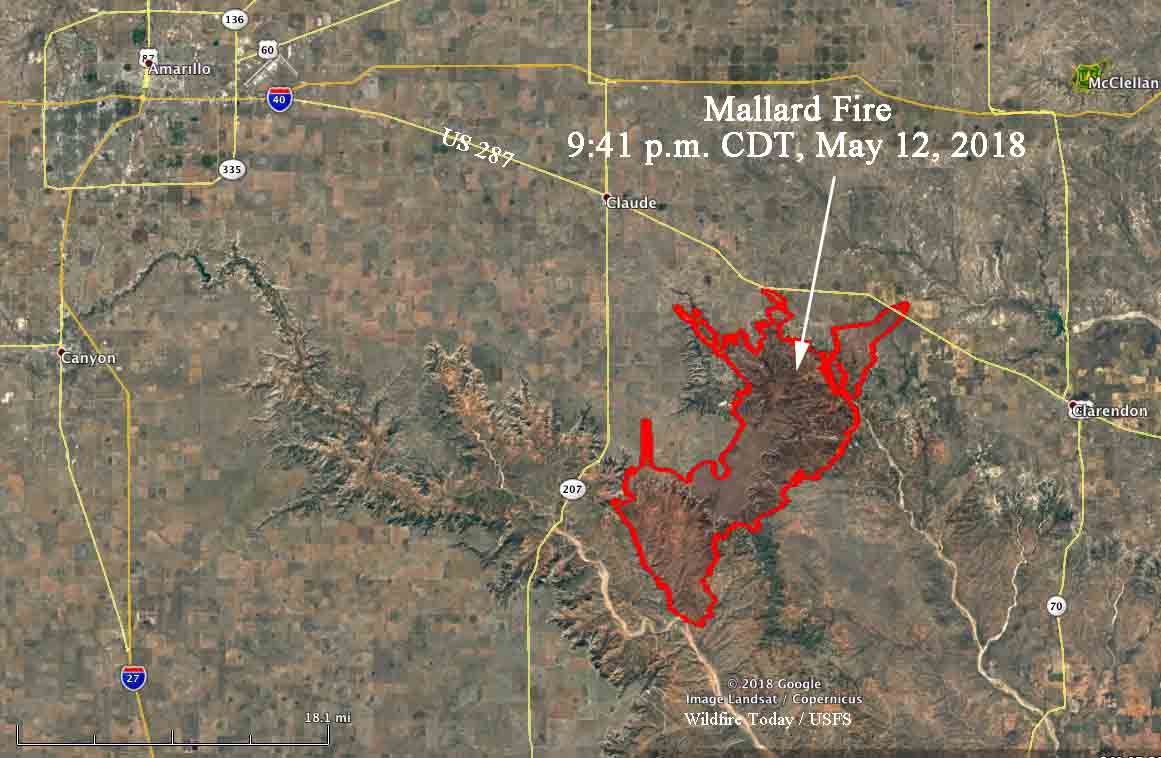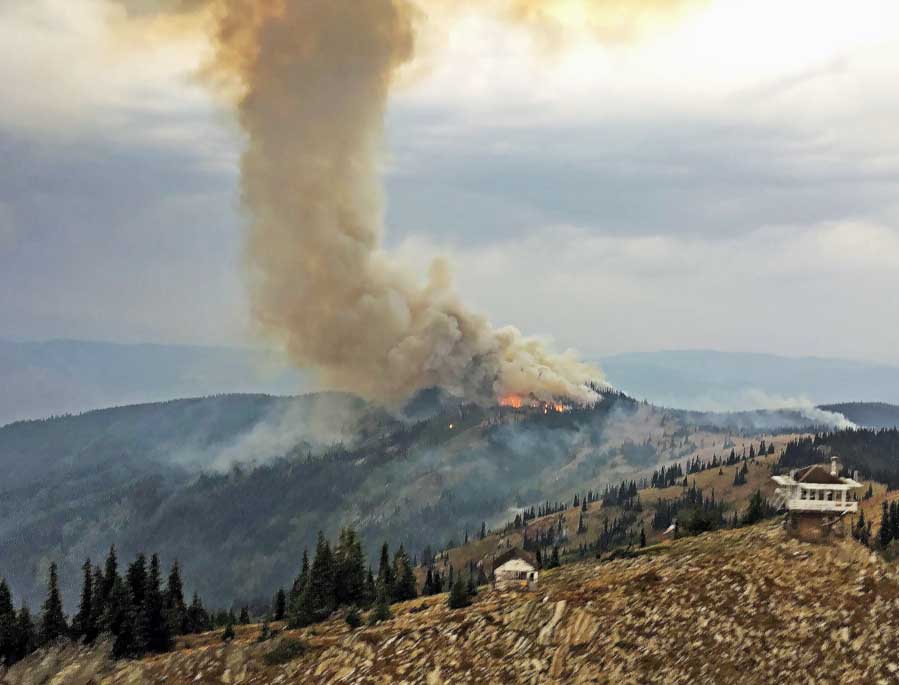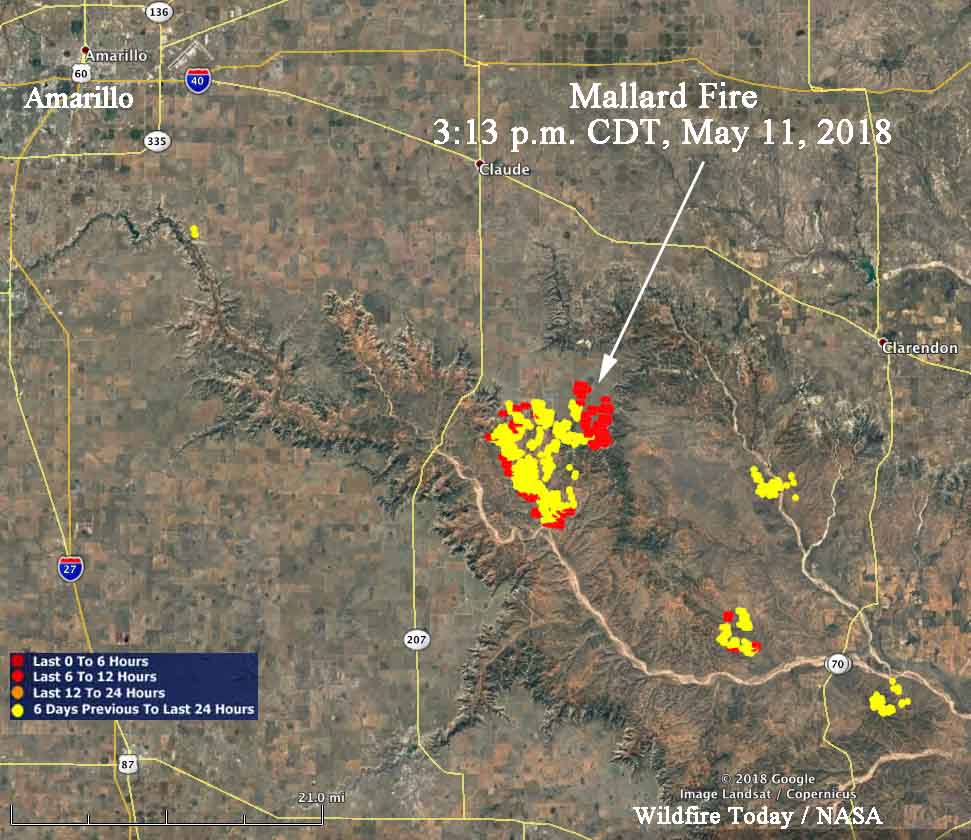
(Originally published at 7:13 a.m. CDT May 13, 2018)
The Mallard Fire in the panhandle of Texas has been very active over the last two days and has burned a total of more than 63,000 acres. But where it has spread from rugged terrain into pastures and agricultural property firefighters have been more successful.
In two places it has approached U.S. Highway 287. Firefighters were able to stop it just before it hit the small community of Goodnight. But seven miles southeast of the town it crossed the highway and ran briefly into fields before being knocked down.

On Sunday the area is just outside a Red Flag Warning area, but the weather will not be helping firefighters much today. The winds will be out of the south at 10 to 22 mph with gusts in the late afternoon reaching 29 mph. The temperature will max out at 94 while the relative humidity increases from 22 percent to 40 percent in the afternoon. There is a 38 percent chance of thunderstorms and gusty winds after 4 p.m.
Weather geeks are having a field day observing the Mallard Fire. For the last two days it has produced huge pyrocumulus clouds stretching for miles into Oklahoma. At times it has morphed into a supercell with lightning and mammatus clouds.
Huge mammantus clouds over the house!! Sayre, OK @ 19:31 on May 11, 2018. pic.twitter.com/igcZpheLGe
— Pj Wittrock (@pjw744) May 12, 2018
A thunderstorm spawned from a fire. Only in #Texas, right?
Here’s one of the incredible shots we got of the monster that is the #MallardFire, complete with a pair of vultures soaring in front of the cloud. Craziness. Y’all be safe out there! #txwx #phwx #txfire pic.twitter.com/XmLHNEcliS— TwoForTheRoad (@twofortheroadtv) May 12, 2018
Born from a pyrocumulus cloud from the massive #MallardFire, a severe storm formed near McLean, TX and grew into this supercell structure northwest of Shamrock. There were many other additional smaller fires spawned by lightning. Amazing event! @NWSAmarillo pic.twitter.com/mTYEKUrsd9
— Mike Umscheid (@mikeumsc) May 12, 2018
Now i’ve seen it all. A Severe Thunderstorm Warning for a supercell born out of a fire. Holy crap. #MallardFire #txwx pic.twitter.com/07JL1SwS0r
— John Homenuk (@jhomenuk) May 11, 2018
Over the last few years extreme fire behavior has become more “normal”. Firefighters must maintain their situational awareness. What they are used to seeing and expecting may not be, now, what actually occurs on a wildfire. Hopefully, technology that exists and has been talked about but not widely deployed, will be made available to firefighters so they can know in real time WHERE the fire is and WHERE firefighters are.







